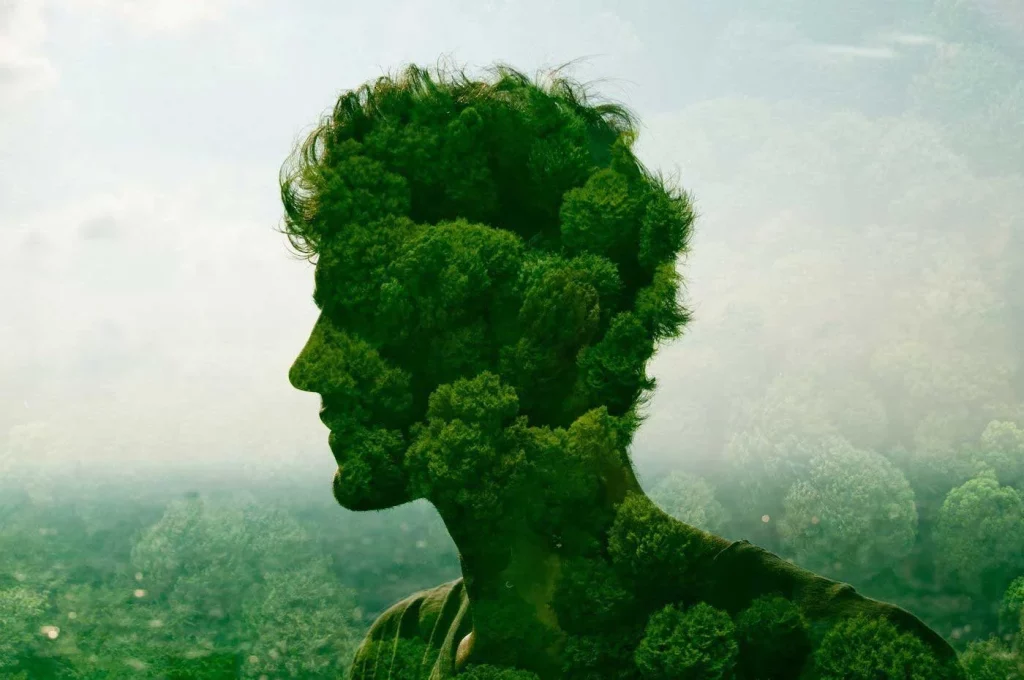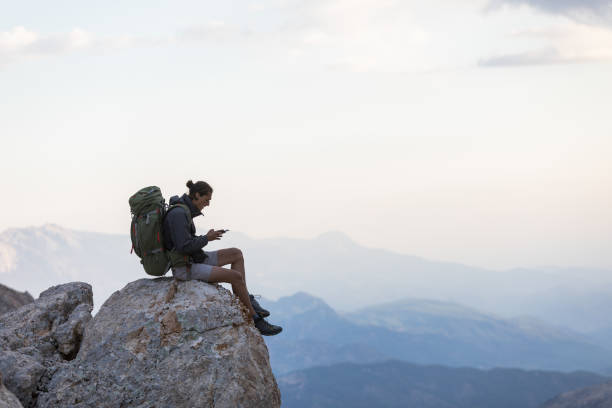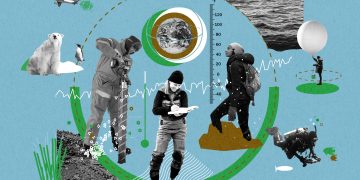Prologue: A River Speaks
At dawn, the river beneath the mist seemed almost alive.
Its current moved slowly around the old wooden bridge, carrying bits of fallen leaves and the faint reflection of the mountains. Fishermen in small boats whispered to one another so as not to disturb the rippling water. To them, the river was not merely a resource but a companion—a presence that had watched over their families for generations.
In many ways, this river is a metaphor for the long and complicated conversation between humans and nature.
The following pages tell a collection of stories—stories that cross continents and centuries, showing that the dream of coexistence is neither abstract nor impossible. It lives in the daily choices of individuals and the collective memory of communities.
I. The Forest Keeper of Kalimantan
In the heart of Borneo’s Kalimantan rainforest, a woman named Ayu Rahman wakes before sunrise. She listens for the call of hornbills while boiling rice over a wood fire. Her village once lived by slash-and-burn farming, which gradually ate away at the forest. But two decades ago, as logging companies closed in, Ayu joined a community-led conservation program.
“The forest is our breath,” she says. “When we cut it down, we cut ourselves.”
Ayu became one of the first female rangers in her region, patrolling the forest to prevent illegal logging and poaching. She also learned to plant ironwood seedlings and guide eco-tourists through orangutan habitats.
Over the years:
- The community’s forest cover increased by 30%.
- Illegal logging declined, as villagers gained alternative income from guiding and handicrafts.
- The return of hornbills and the sighting of rare clouded leopards became symbols of hope.
Her story shows that harmonious coexistence often starts with a change in livelihoods, proving that local empowerment can reverse ecological decline.
II. The Wolf Track in Poland’s Snow
In the Białowieża Forest, straddling the border of Poland and Belarus, winter mornings often reveal delicate footprints in the snow—wolf tracks leading into the deeper woods.
For decades, local farmers saw wolves as enemies, predators of their sheep and calves. Hunting once drove the population to near extinction.
In the 1990s, as part of a rewilding initiative, conservationists began to protect wolves while offering farmers compensation for livestock losses.
Biologists taught herders how to use guard dogs and build predator-proof enclosures.
Thirty years later:
- The forest has become one of Europe’s richest biodiversity refuges.
- Ecotourism centered on wolf and bison tracking has brought income to rural communities.
- Farmers who once feared wolves now speak of them with a mix of respect and cautious pride.
The wolf, long a symbol of wilderness, turned into a partner in restoring ecosystem balance, controlling deer populations that otherwise would overgraze young trees.
III. Bamboo Bridges in the Himalayas
In a remote valley of Bhutan, wooden trucks cannot reach the mountain hamlets during the rainy season. For centuries, villagers relied on bamboo bridges woven by local artisans to cross fast-flowing rivers.
Recently, the government, working with local cooperatives, revived this traditional craft to reduce the need for concrete bridges that disturb river ecosystems.
A story often told by elders recounts how the first bridge builder, a monk named Dorji, believed the river goddess would bless travelers if humans crossed without cutting into the riverbanks.
The revived tradition has now become part of Bhutan’s Gross National Happiness strategy, emphasizing cultural continuity, ecological sensitivity, and rural connectivity.
In these bridges we see how ancestral wisdom can still guide modern sustainability efforts, blending practicality with reverence for the land.
IV. The Prairie Scientist in North Dakota
Dr. Samuel Hayes, an ecologist in his early forties, spends every summer surveying grasslands where bison once roamed in great herds.
He collaborates with ranchers to reintroduce native prairie grasses and set aside corridors for wildlife migration.
Initially met with suspicion—“You can’t grow profits on wildflowers,” one rancher said—Hayes slowly built trust by demonstrating that healthy prairies retain more soil moisture, reduce the need for expensive fertilizers, and increase resilience to drought.
Over fifteen years:
- More than 200,000 acres of degraded pasture have been restored.
- Populations of pollinators like bees and butterflies have rebounded.
- Ranchers, once skeptical, now proudly call themselves “grassland stewards.”
His work underscores the principle that coexistence often requires science to listen to local economies and vice versa.

V. Coral Gardeners of Moorea
Far from continental landscapes, in the turquoise lagoons of Moorea, French Polynesia, a group of young divers call themselves “the Coral Gardeners.”
They spend hours underwater attaching fragments of resilient coral to metal frames anchored in the sand.
These corals, carefully chosen for their tolerance to warmer waters, grow into small reefs that shelter fish and buffer shorelines against storms.
The project started as a volunteer effort by local surfers who noticed their favorite breaks were losing the vibrant reefs beneath.
Now it has grown into a global initiative:
- More than 500,000 corals have been planted across the Pacific.
- Ecotourism funds ongoing restoration.
- Educational campaigns reach thousands of schoolchildren each year.
Their story shows that youth-driven action can restore ecosystems once thought doomed by climate change.
VI. Lessons from an Indigenous Elder in the Amazon
In the western Amazon, near the borders of Brazil and Peru, a 72-year-old elder named Tupã speaks in his native tongue to a circle of visiting scientists. A younger relative translates his words:
“The forest does not belong to us. We belong to the forest.
If you measure the trees only for their timber, you will never hear them speak.”
Tupã describes medicinal plants unknown to most outsiders and warns that some species have vanished since he was a boy.
He welcomes scientific tools like satellite mapping but insists that the wisdom of his ancestors—rotational hunting, sacred groves, seasonal fishing—offers guidance for conservation.
His message bridges two worlds: modern data-driven ecology and age-old traditional knowledge, both essential for maintaining harmony.
VII. A Tale of Two Cities: Copenhagen and Jakarta
Cities embody the paradox of human–nature coexistence.
In Copenhagen, decades of investment in bike lanes, urban wetlands, and renewable energy transformed the Danish capital into a model of urban sustainability.
Residents often speak of feeling “closer to nature” even in a dense metropolis.
Meanwhile, in Jakarta, rapid urban growth and mangrove loss have left the city vulnerable to flooding and subsidence.
Community-led mangrove restoration projects have begun to offer hope, but challenges remain immense.
These contrasting narratives show that coexistence is not guaranteed by wealth or culture alone—it depends on governance, planning, and public will.
VIII. Threads that Bind the Stories
Across these diverse tales, a few common themes emerge:
- Respect for local knowledge and culture often catalyzes ecological restoration.
- Economic alternatives—whether eco-tourism, sustainable ranching, or urban green jobs—provide incentives for coexistence.
- Partnerships between science and communities unlock long-term solutions.
- Empathy and storytelling can be as powerful as policy in shifting attitudes toward nature.
Each story illustrates that coexistence is less a fixed destination than a continuous process of negotiation and adaptation.
Epilogue: The Song of the Crane
On a foggy wetland in eastern Asia, a pair of red-crowned cranes dance, their wings forming wide arcs against the rising sun.
Local villagers watch quietly from a distance, remembering a time when hunting almost erased these birds from the landscape.
Conservation agreements between governments, scientists, and farmers have slowly brought the cranes back.
Their return is more than an ecological success; it is a reminder that the dance between humans and nature can be choreographed not only by conflict but also by care, patience, and shared imagination.

















































